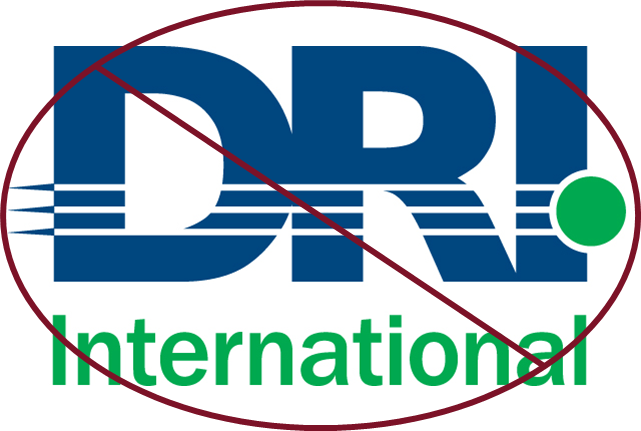The Executive Guide to Business Continuity (Series) – Part 2: Repositioning Business Continuity as a Strategic Advantage
Introduction
The world of business continuity has evolved, and so should our approach to it. BC isn’t just about responding to disasters or keeping the lights on during a crisis, it’s a powerful, strategic tool that can drive growth, enhance trust, and even open new doors for a business. When BC is done right, it becomes a competitive advantage that builds resilience in every part of the organization, creating value and setting it apart.
This post explores why executives should view BC as a strategic advantage and outlines how to integrate resilience into the organization’s core values and strategy.
Outgrowing the ‘Insurance Policy’ Mindset
For too long, BC has been viewed as an insurance policy for worst-case scenarios; plans and policies to turn to when things go wrong. While that’s still part of it, this approach misses the bigger picture. Effective BC is about more than disaster recovery. It’s about building proactive resilience and creating a foundation that not only withstands disruptions but thrives despite them.
To harness the full power of BC, there are a few key mindset shifts:
- Make Resilience Part of Your Brand – Stakeholders today value reliability. By prioritizing BC, you’re sending a message to clients, stakeholders, partners, and employees that they can trust your organization to handle the unexpected.
- See Continuity as a Growth Enabler – When a company can manage risk effectively, it can pursue opportunities that others might shy away from.
- Use BC to Build Trust – A mature BC program signals to stakeholders that you’re not just focused on short-term gains but are serious about long-term stability and reliability.
1. Aligning Business Continuity with Corporate Strategy
To maximize BC’s value, it’s important to align it with the company’s broader strategy. This alignment doesn’t just mean responding when something happens; it means making BC a proactive part of your business planning and growth.
- BC Should Support Business Goals – Make sure BC aligns with the company’s core objectives. For instance, if you’re focused on customer experience, continuity plans should prioritize fast recovery to minimize disruptions that could affect customers.
- Use BC to Expand Your Business Comfort Zone – Some opportunities come with risk. A strong BC program can help executives assess these risks, allowing the company to expand into new markets or take on complex projects with confidence.
- Make Resilience a Core Value – When resilience is embedded in your business culture, BC becomes everyone’s responsibility. This kind of culture shift promotes proactive problem-solving and ensures that everyone is invested in the organization’s stability.
2. Demonstrating BC’s Value to Stakeholders
Executives often need to justify BC investments to stakeholders who may not see it as a necessity. Highlighting the real, strategic benefits of BC can help ensure that it’s seen as a smart, long-term investment.
- Show How BC Enhances Trust – In today’s world, customers expect and demand companies to deliver, even when things go wrong. A mature BC plan is a way to reinforce this promise, strengthening customer loyalty by ensuring they can rely on you.
- Position BC as a Differentiator – In competitive markets, BC can set you apart. Many clients, especially in high-stakes industries, prefer to work with organizations that have a proactive approach to risk management.
- Quantify the Benefits of BC – Use data to show BC’s financial impact whenever possible. Measure the costs avoided from potential disruptions or highlight productivity gains from reduced downtime. By putting numbers to BC, you help stakeholders see it as an investment with real returns.
3. The Role of Leadership in Making BC a Priority
For BC to become a strategic priority, it must have buy-in from the top. Executives play a critical role in setting the tone and showing that resilience is a priority across the organization. Here’s how leaders can make a difference:
- Encourage Cross-Functional Collaboration – Effective BC involves multiple departments, including IT, HR, operations, and finance. Promoting collaboration between these teams ensures that BC strategies are well-rounded and comprehensive.
- Conduct Regular Assessments and Report Progress – Regular assessments of the company’s resilience maturity can help identify gaps and areas for improvement. Sharing these insights with stakeholders shows transparency and a commitment to continuous improvement.
- Include BC in Public Communications – When BC is part of annual reports or investor calls, it signals that the organization takes resilience seriously, making it clear that BC is part of the company’s DNA.
4. Leveraging BC as a Competitive Advantage
A strategic approach to BC does more than mitigate risks, it helps you stand out from competitors. Businesses that can effectively manage disruptions have a significant edge over those that can’t. Here’s how BC can give you an advantage:
- Preparedness as a Market Edge – Organizations with strong BC programs tend to win more contracts and build more partnerships. In many industries, clients and investors prioritize resilience when choosing partners, especially when the stakes are high.
- Operational Flexibility – BC fosters adaptability. With a solid continuity strategy, companies can respond quickly to changes, pivot in response to disruptions, and even adjust to market shifts. This flexibility is invaluable in today’s fast-moving business landscape.
- Protecting Brand Reputation – A strong BC plan minimizes the impact of disruptions, reducing the risk of negative publicity and reputational damage. Organizations that bounce back quickly are more likely to maintain positive relationships with customers and come out stronger after a crisis.
5. Building a Culture of Resilience and Innovation
True resilience isn’t just about surviving crises, it’s about using them as opportunities to improve and innovate. By creating a culture of resilience, executives can build an environment where challenges inspire new ideas and solutions. Here’s how to get there:
- Promote a Growth Mindset – Encourage your teams to see challenges as chances to learn and grow. This mindset turns crisis response into a proactive approach where employees actively look for ways to make the company stronger.
- Recognize and Reward Resilience – Recognize employees who contribute to resilience, whether they’re mitigating risks, streamlining processes, or innovating under pressure. Celebrating these efforts reinforces the value of BC across the company.
- Encourage Continuous Learning – Regular debriefs after exercises or real events help capture valuable lessons. This continuous feedback loop ensures the organization keeps evolving and improving its resilience practices.
Conclusion: Making Resilience a Competitive Edge
In a world where disruptions are the norm, resilience is no longer optional, it’s essential. When BC becomes a core part of the business, it helps organizations not just survive but thrive, creating a foundation for growth and competitive advantage.
By integrating BC into your company’s values and strategy, you position your organization to not only weather disruptions but to emerge from them stronger, more trusted, and more competitive than ever. This is the ultimate goal of modern business continuity: to turn resilience into a source of strength that supports long-term success.
In Part 3, we’ll dive into the essential components that make up a modern business continuity program. From crisis management and disaster recovery to operational resilience, we’ll explore each element’s role in building a well-rounded strategy. We’ll look at how these pieces work together and why alignment with your organization’s goals is crucial. This guide will help you understand how to create a resilience framework that supports both stability and growth.











